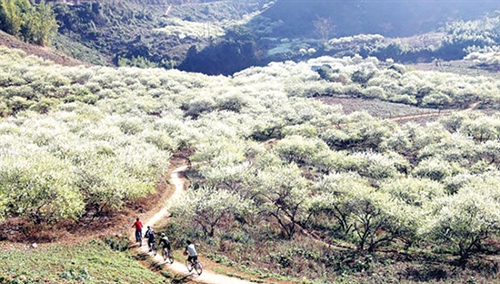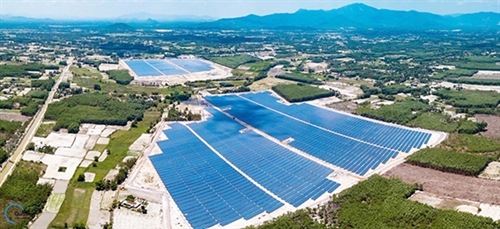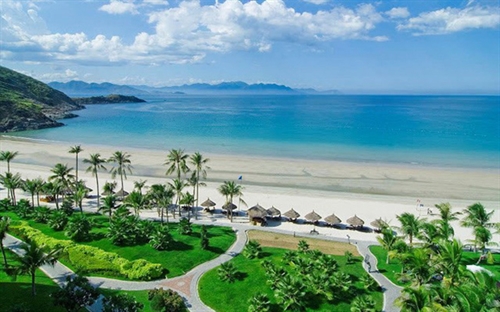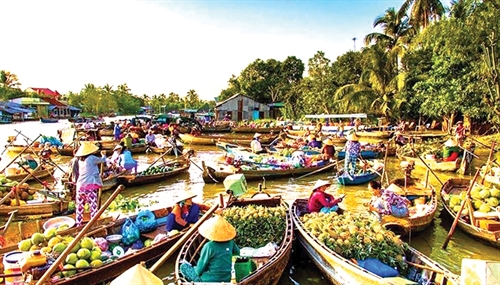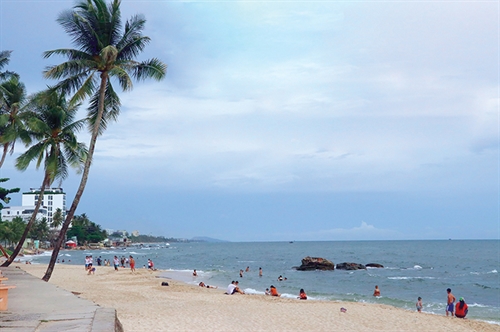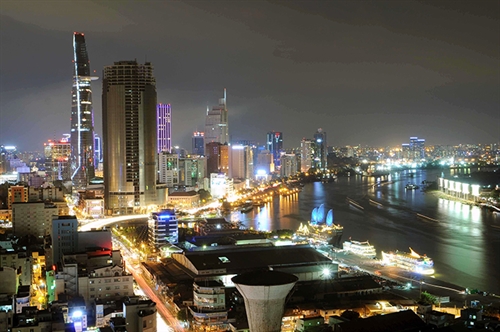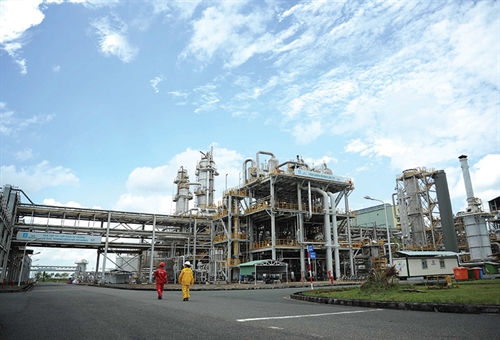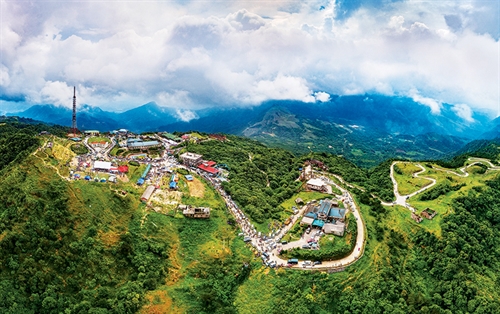Located along Hau river, the southern main distributary of the Mekong River in Vietnam’s territory, and in the heart of the Mekong River delta, Hau Giang province borders Can Tho city to the north, Soc Trang province to the south, Vinh Long province to the east and Kien Giang and Bac Lieu provinces to the west. Covering some 1,600 square kilometers, Hau Giang province has a population of more than 776,550 (according to the 2019’s statistics) and is home to Kinh (Viet) and six ethnic minority groups, namely Khmer, Hoa, Cham, Tay, Muong and Nung. It has Vi Thanh city, Nga Bay and Long My towns and five districts of Chau Thanh A, Chau Thanh, Phung Hiep, Long My and Vi Thuy. With a dense network of rivers and canals of around 2,300 kilometers, Hau Giang province is connected to neighboring provinces by 1A, 61, 61B, southern Hau river and Quan Lo-Phung Hiep national highway section. Lying on the main waterway axis to Cai Cui international port in Can Tho city, Hau Giang province can take full advantage of the Can Tho International Airport as well as the city’s logistics, infrastructure, scientific and technological advantages and other strengths for its socio-economic development.
Key sectors calling for FDI
Hau Giang plans to invest VND 9.4 trillion (approximately USD 408.6 million) in upgrading its transport infrastructure facilities in the 2021-2030 period. As a result, the province will concentrate public investment in industrial infrastructure, key roads and waterway routes linking its strategic areas with other provinces in the region.
The province now accommodates two industrial parks (IPs), including the 290.79-ha Song Hau IP in Chau Thanh district and 201-ha Tan Phu Thanh IP in Chau Thanh A district, and five concentrated industrial clusters covering a total area of 1.385 ha. It also boasts Hau Giang Hi-Tech Applied Agricultural Park, Hau Giang zone for scientific and technological experiments and storage of genetic resources, Hau river industrial-urban zone and industrial parks and clusters’ administration center.
 |
| Rice fields in the Mekong River Delta province of Hau Giang in flooding season__Photo: Duy Khuong/VNA |
The province houses 31 foreign direct investment (FDI) projects that are worth a total of USD 558 million and specialized in agricultural product processing, steel production and windpowered electricity generation. With four projects capitalized at over USD 282 million, Hong Kong (China) is leading the total of 10 countries and territories investing in the province, Vice Director of the Hau Giang Planning and Investment Department Vo Cong Khanh told the Vietnam Law and Legal Forum magazine.
According to Chung Wai Fu, Administration Manager of Vietnam Lee & Man Paper Manufacturing Ltd. in Phu Huu A concentrated industrial cluster in Chau Thanh district, a subsidiary of the Hong Kong-based Lee & Man Paper Manufacturing Ltd., Hau Giang has attracted more and more FDI capital thanks to its strategic location in the western sub-region of Hau river - an essential factor for FDI attraction, which facilitates its connection with other localities in the region. As adjacent to Can Tho city, the province also enjoys scientific and technological advantages, logistics and infrastructure facilities and other strengths of the key economic city in the southwestern region. In addition, the province has implemented support mechanisms and policies for investors with the highest level of investment incentives and fewer obligations within a law-provided framework. He expressed his belief that in the near future, Hau Giang would become an economic hub of the Mekong River delta in particular and Vietnam in general.
Chairman Dong Van Thanh of the Hau Giang People’s Committee affirmed that provincial authorities have always advocated to building a transparent and favorable business and investment environment in which administrative procedures are reformed to reduce time and cost for investors. The province always considers investors’ work as its own. With this determination, the chairman commits to creating the best conditions for investors and organizations in the province.
At present, investors in IPs are entitled to a corporate income tax rate of 10 percent for 15 years after they generate taxable incomes. In addition, they will enjoy import duty exemption for raw materials, components and semi-finished products imported to create fixed assets.
In particular, investment projects in sectors and trades eligible for investment incentives or special investment incentives in IPs will be exempted from land and water surface rental for up to 15 years. Approved investment projects that build houses for IP workers will enjoy land and water surface rental exemption for the entire lease term. However, these projects’ owners may not include land rental in their house rent rates.
Hau Giang provincial authorities also assist investors in science and technology transfer and vocational training for local workers and help pay their expenses for enterprise establishment registration and product advertisement.
From now until 2025, Hau Giang province is expected to attract FDI for 31 projects on building infrastructure facilities of industrial parks and clusters, development of science and technology, clean energy, hi-tech agriculture, high added value services and health.
Community tourism development orientations
Hau Giang province is famous for endless rice fields, peaceful canals tangled with boats and fruit orchards. Its well-known fruits include Nam Roi Phu Huu pomelo, Long Tri tangerine, Nga Bay orange, seedless lemon and geographical indication-registered Cau Duc pineapple. The province is home to a number of historical and cultural relics, including the Temple of Uncle Ho in Long My district, Can Tho Party Committee base and relics of Chuong Thien victory in Vi Thanh city and Truc Lam zen monastery in Long My town. It is rich in craft villages famous for boat making, mat weaving and water hyacinth handicraft as well as cultural festivals. Among the best known cultural festivals of the Khmer are Chol Chnam Thmay (new year) festival, which is held in the middle of the third lunar month, Ok Om Bok (moon worship) festival, which is held in the tenth lunar month, and Sene Dolta (ancestor worship) festival which is held in Khmer pagodas in the eighth lunar month.
The province has so far successfully developed tours to Nga Bay, also known as Phung Hiep, floating market in Nga Bay town, the Viet-Uc eco-tourism zone in Vi Thuy district and fruit orchards in Vi Thanh city.
In order to revive the hospitality sector affected by the COVID-19 pandemic and welcome 450,000 tourist arrivals each year from now until 2025, the province has worked out numerous schemes to develop tourism and promote its tourism image.
Under these schemes, the sector plans to develop eco-tourism at the 2,800-hectare Lung Ngoc Hoang Nature Wetland Reserve and the Spring Agricultural Center in Phung Hiep district apart from community, recreational and spiritual tourism products.
To prepare for the community tourism development scheme, the Hau Giang Culture, Sports and Tourism Department has organized a number of fact-finding tours to other localities in the Mekong River delta and northern cities and provinces to learn the latter’s experiences and conducted surveys of all possible sites that can be zoned off for this tourism model, its Vice Director Nguyen Thi Ly told Hau Giang newswire. The province has developed its first community tourism model in the Cau Duc pineapple farming area and organized tourism training courses for farmers there, she added.
Trang Kieu Diem, owner of a community tourism site in Cau Duc pineapple farming area in Hoa Tien commune, Vi Thanh city, said that her family has been a traditional pineapple grower but she did not know how to attract tourists although she would like to introduce this fruit specialty to everyone. Thanks to the department’s assistance and guidance regarding community tourism, she knew how to do it and could offer more pineapple dishes to tourists, she said.
This year is the first year Hau Giang cooperates with 12 other provinces and Can Tho city in the Mekong River delta and Ho Chi Minh City in building tourism products and regional tourism brands and calling for investment in tourism.
The council for boosting inter-regional tourism cooperation between Ho Chi Minh City and 13 provinces in the Mekong River delta will study the opening of two inter-regional tours, and organize talks, conferences and forums to promote investment in building tourism products.
The province itself plans to organize the Culture, Sports and Tourism Week in mid-year, visit typical tourism models in the country and organize farmtrips and presstrips to explore the province. In addition, it will take part in the Vietnam International Travel Mart in Hanoi, National Tourism Year 2021 in Ninh Binh province, and Ho Chi Minh City Tourism Day.
The province hopes to receive 1 million visitors in 2025, including 70,000 foreigners.- (VLLF)
